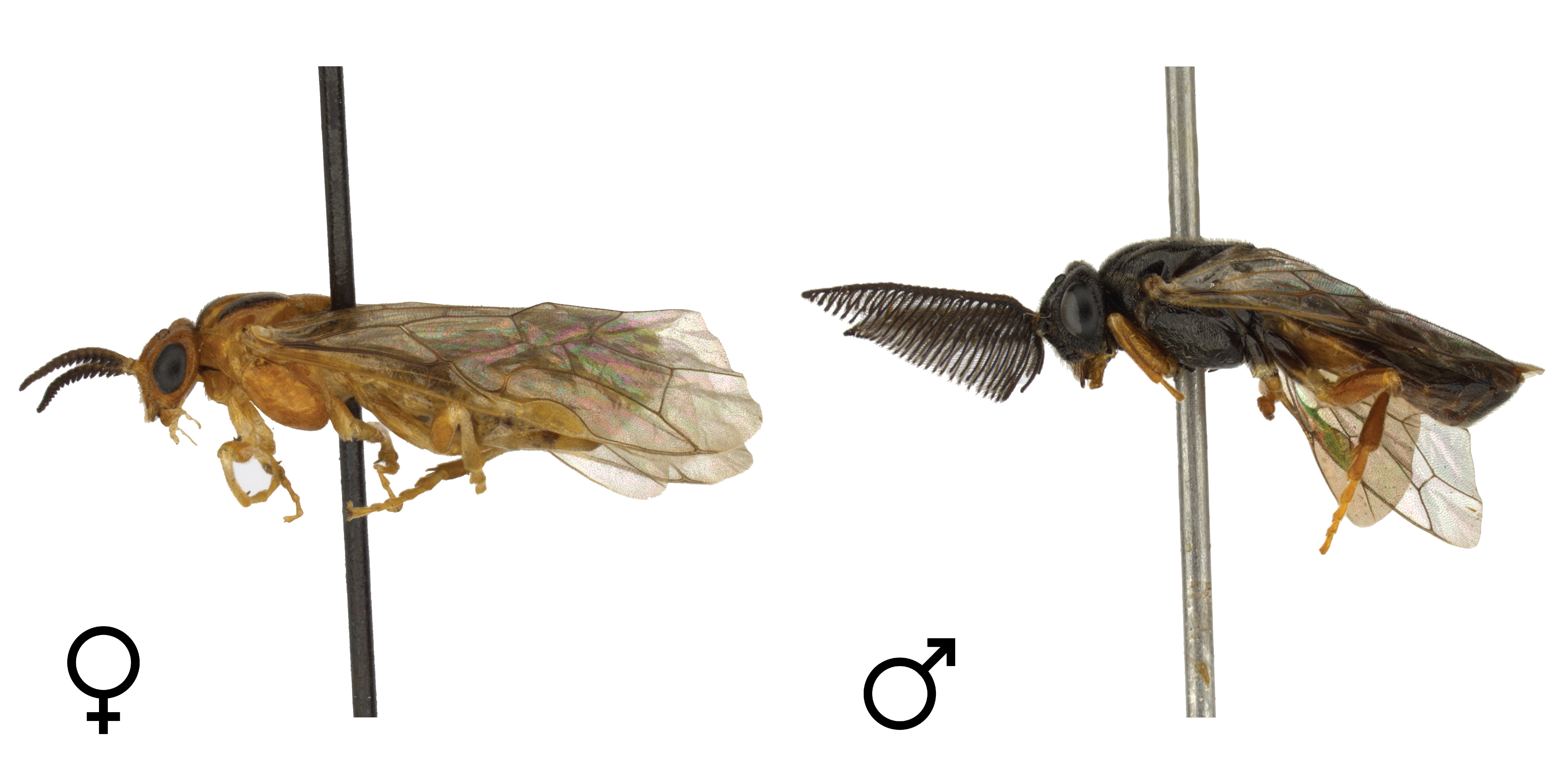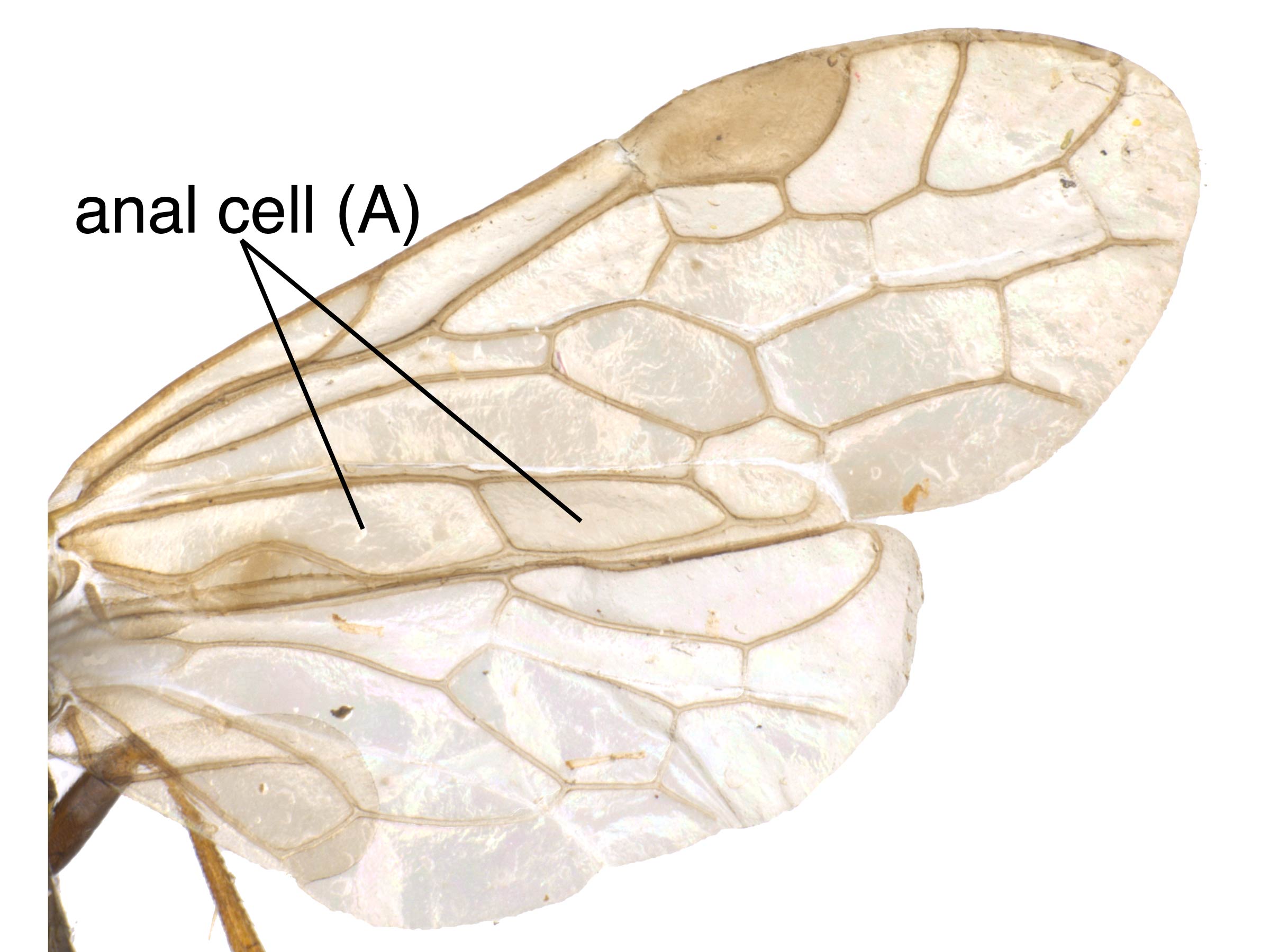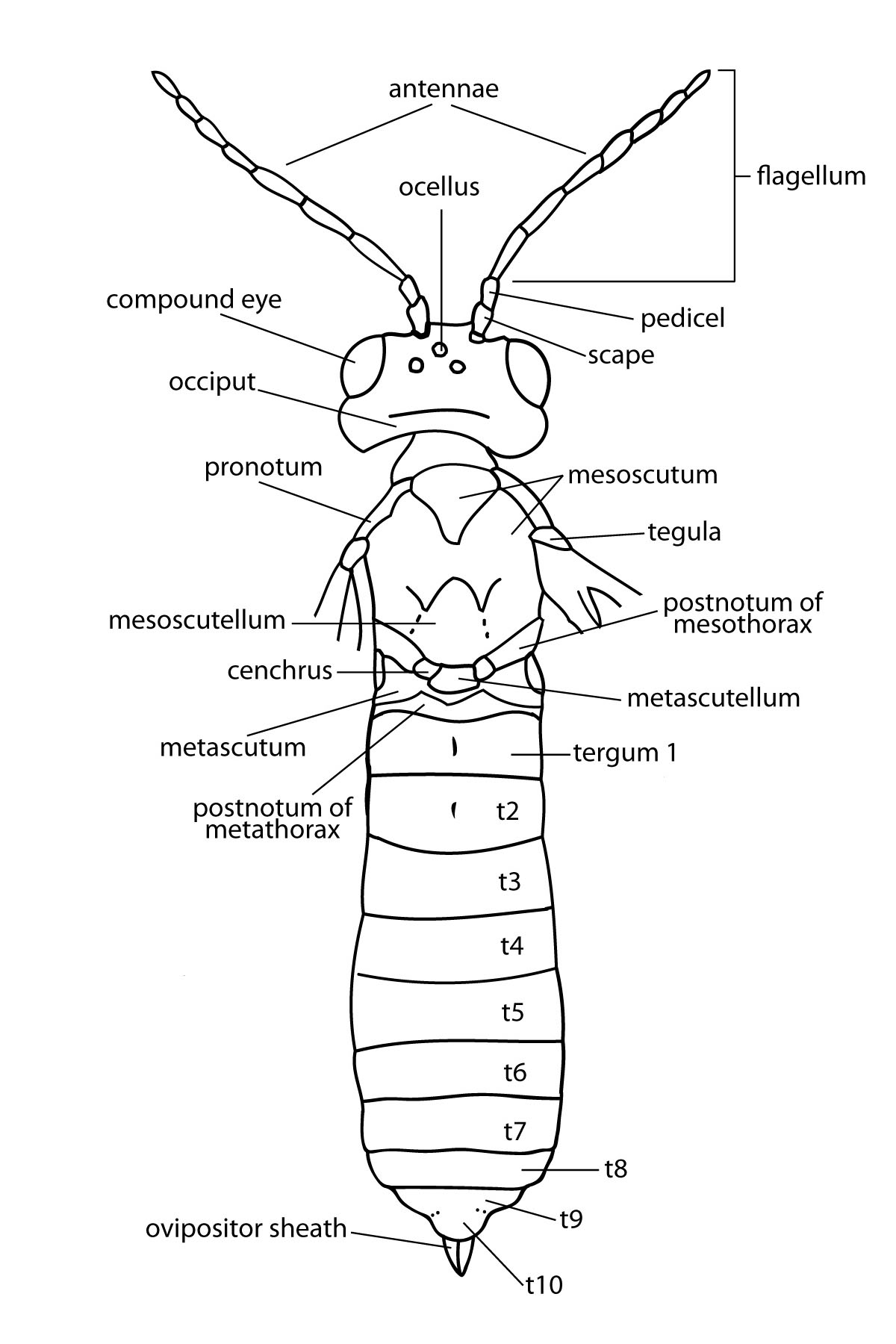Family: Tenthredinidae
Family common name: common sawflies
Subfamily: Selandriinae
Tribe: Strongylogasterini
Genus: Eriocampidea Ashmead, 1898
Subgenera: none
The Tenthredinidae are the most species-rich family and are found throughout the world, in all continents but Antarctica. They are known as the “common sawflies.” They can generally be recognized by a cylindrical body and long, segmented antennaeantenna:
the sensory organ emerging from the front of the head, usually between the compound eyes and above the clypeus; includes the flagellum, scape and pedicel
 . Otherwise they come in a variety of colors, sizes, and forms (Goulet 1992Goulet 1992:
. Otherwise they come in a variety of colors, sizes, and forms (Goulet 1992Goulet 1992:
Goulet H. 1992. The genera and subgenera of the sawflies of Canada and Alaska: Hymenoptera. Symphyta. The insects and arachnids of Canada. Part 20. Agriculture Canada Publication.).
Sawflies in the Selandriinae subfamily are relatively small and slender. The range of Selandriinae is worldwide; it occurs on all continents except Antarctica (Goulet 1992Goulet 1992:
Goulet H. 1992. The genera and subgenera of the sawflies of Canada and Alaska: Hymenoptera. Symphyta. The insects and arachnids of Canada. Part 20. Agriculture Canada Publication.). It is the most common and diverse group of tenthredinids in tropical regions, particularly in Central America, South America, and Southeast Asia (Smith 1969eSmith 1969e:
Smith DR. 1969e. Nearctic Sawflies. II. Selandriinae: Adults (Hymenoptera: Tenthredinidae). Technical Bulletin, U.S. Department of Agriculture 1398: 1-48.). Selandriinae contains the only known sawflies that feed on non-vascular plants, specifically ferns (Smith et al. 2013Smith et al. 2013:
Smith DR, Janzen DH and Hallwachs W. 2013. Food plants and life histories of sawflies of the families Argidae and Tenthredinidae (Hymenoptera) in Costa Rica, a supplement. Journal of Hymenoptera Research 35: 17-31. https://doi.org/10.3897/JHR.35.5496).The subfamily can be distinguished from other subfamilies by wing venationvenation:
the network of veins on a wing
(Goulet 1992Goulet 1992:
Goulet H. 1992. The genera and subgenera of the sawflies of Canada and Alaska: Hymenoptera. Symphyta. The insects and arachnids of Canada. Part 20. Agriculture Canada Publication.).
Eriocampidea are small, about 5 mm in length, and are sexually dimorphicdimorphic:
having two forms, usually in the context of taxon with different male and female morphology
 ; females of both species are black and white, while the males are orange and black. The genus is a southwestern fern-feeding sawfly (Smith 1969eSmith 1969e:
; females of both species are black and white, while the males are orange and black. The genus is a southwestern fern-feeding sawfly (Smith 1969eSmith 1969e:
Smith DR. 1969e. Nearctic Sawflies. II. Selandriinae: Adults (Hymenoptera: Tenthredinidae). Technical Bulletin, U.S. Department of Agriculture 1398: 1-48.).
There are two described extantextant:
in existence; opposite of extinct
species worldwide, and both are North American (Taeger et al. 2010Taeger et al. 2010:
Taeger A, Blank SM, and Liston AD. 2010. World Catalog of Symphyta (Hymenoptera). Zootaxa 2580: 1-1064.).
Subfamily characters
 vein Rs+M curved near intersection with veinvein:
vein Rs+M curved near intersection with veinvein: Sc+R (Smith 1969eSmith 1969e:
Sc+R (Smith 1969eSmith 1969e: vein M meeting Sc+R basalbasal:
vein M meeting Sc+R basalbasal: veins M and m-cu about parallel (Smith 1969eSmith 1969e:
veins M and m-cu about parallel (Smith 1969eSmith 1969e: vein 2r-m present (Goulet 1992Goulet 1992:
vein 2r-m present (Goulet 1992Goulet 1992:Genus characters
 flat and slightly emarginated (Smith 1969eSmith 1969e:
flat and slightly emarginated (Smith 1969eSmith 1969e: as wide as long (Smith 1969eSmith 1969e:
as wide as long (Smith 1969eSmith 1969e: anal crossveinanal crossvein:
anal crossveinanal crossvein: (Smith 1969eSmith 1969e:
(Smith 1969eSmith 1969e: simple (Smith 1969bSmith 1969b:
simple (Smith 1969bSmith 1969b:Eriocampidea can be confused with similar species in the subfamily Selandriinae or tribe Strongylogastrini. It can be distinguished from closely related Thrinax and Strongylogaster by the lack of an occipitalocciput:
the posterior surface of the head
 ridge and short antennaeantenna:
ridge and short antennaeantenna:
the sensory organ emerging from the front of the head, usually between the compound eyes and above the clypeus; includes the flagellum, scape and pedicel
 (Smith 1969eSmith 1969e:
(Smith 1969eSmith 1969e:
Smith DR. 1969e. Nearctic Sawflies. II. Selandriinae: Adults (Hymenoptera: Tenthredinidae). Technical Bulletin, U.S. Department of Agriculture 1398: 1-48.).
none
In North America, Eriocampidea feeds on Pteridium aquilinum (bracken fern) (Smith and Lawton 1980Smith and Lawton 1980:
Smith DR and Lawton JH. 1980. Review of the sawfly genus Eriocampidea (Hymenoptera: Tenthredinidae). Proceedings of the Entomological Society of Washington 82 (3): 447-453.).
Female E. arizonensis deposit eggs on recent fern growth at high elevation (8000–9000 feet) meadow sites. After hatching, larvaelarva:
the immature stage of holometabolous insects
 feed on apicesapex:
feed on apicesapex:
the end or most distal area of any structure
of pinnae, concentrated at the apexapex:
the end or most distal area of any structure
of the frond. LarvaeLarva:
the immature stage of holometabolous insects
 are green with a light brown head capsule, about 13 mm in length. Feeding behavior can result in extensive damage to the plant. Eriocampidea arizonensis is bivoltinebivoltine:
are green with a light brown head capsule, about 13 mm in length. Feeding behavior can result in extensive damage to the plant. Eriocampidea arizonensis is bivoltinebivoltine:
describing a life cycle with two generations per calendar year
(Smith and Lawton 1980Smith and Lawton 1980:
Smith DR and Lawton JH. 1980. Review of the sawfly genus Eriocampidea (Hymenoptera: Tenthredinidae). Proceedings of the Entomological Society of Washington 82 (3): 447-453.).
World: This genus is only known from North America (Smith and Lawton 1980Smith and Lawton 1980:
Smith DR and Lawton JH. 1980. Review of the sawfly genus Eriocampidea (Hymenoptera: Tenthredinidae). Proceedings of the Entomological Society of Washington 82 (3): 447-453., Taeger et al. 2010Taeger et al. 2010:
Taeger A, Blank SM, and Liston AD. 2010. World Catalog of Symphyta (Hymenoptera). Zootaxa 2580: 1-1064.).
North America: Eriocampidea arizonensis occurs in the southwestern United States and northern Mexico, specifically recorded in Arizona, New Mexico, and Durango. Eriocampidea chiapesensis occurs in southern Mexico, recorded from Chiapas, Michoacán, and Oaxaca (Smith 1969eSmith 1969e:
Smith DR. 1969e. Nearctic Sawflies. II. Selandriinae: Adults (Hymenoptera: Tenthredinidae). Technical Bulletin, U.S. Department of Agriculture 1398: 1-48., Smith and Lawton 1980Smith and Lawton 1980:
Smith DR and Lawton JH. 1980. Review of the sawfly genus Eriocampidea (Hymenoptera: Tenthredinidae). Proceedings of the Entomological Society of Washington 82 (3): 447-453.).
Map data from: GBIF.org (29 October 2019) GBIF Occurrence Download Eriocampidea and the Smithsonian National Museum of Natural History Entomology Collection (USNM)
Details about data used for maps can be found here.